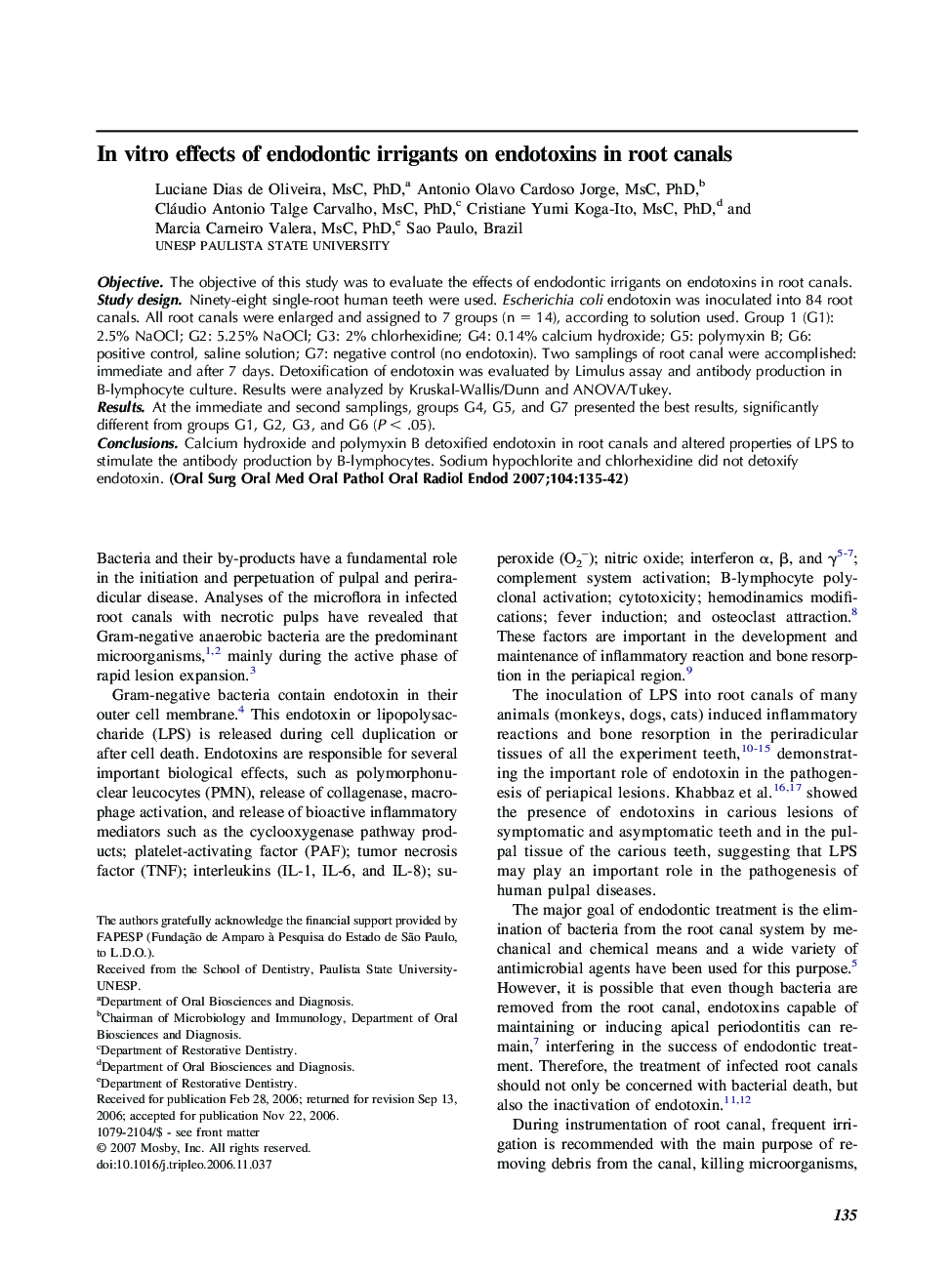| Article ID | Journal | Published Year | Pages | File Type |
|---|---|---|---|---|
| 3169182 | Oral Surgery, Oral Medicine, Oral Pathology, Oral Radiology, and Endodontology | 2007 | 8 Pages |
ObjectiveThe objective of this study was to evaluate the effects of endodontic irrigants on endotoxins in root canals.Study designNinety-eight single-root human teeth were used. Escherichia coli endotoxin was inoculated into 84 root canals. All root canals were enlarged and assigned to 7 groups (n = 14), according to solution used. Group 1 (G1): 2.5% NaOCl; G2: 5.25% NaOCl; G3: 2% chlorhexidine; G4: 0.14% calcium hydroxide; G5: polymyxin B; G6: positive control, saline solution; G7: negative control (no endotoxin). Two samplings of root canal were accomplished: immediate and after 7 days. Detoxification of endotoxin was evaluated by Limulus assay and antibody production in B-lymphocyte culture. Results were analyzed by Kruskal-Wallis/Dunn and ANOVA/Tukey.ResultsAt the immediate and second samplings, groups G4, G5, and G7 presented the best results, significantly different from groups G1, G2, G3, and G6 (P < .05).ConclusionsCalcium hydroxide and polymyxin B detoxified endotoxin in root canals and altered properties of LPS to stimulate the antibody production by B-lymphocytes. Sodium hypochlorite and chlorhexidine did not detoxify endotoxin.
